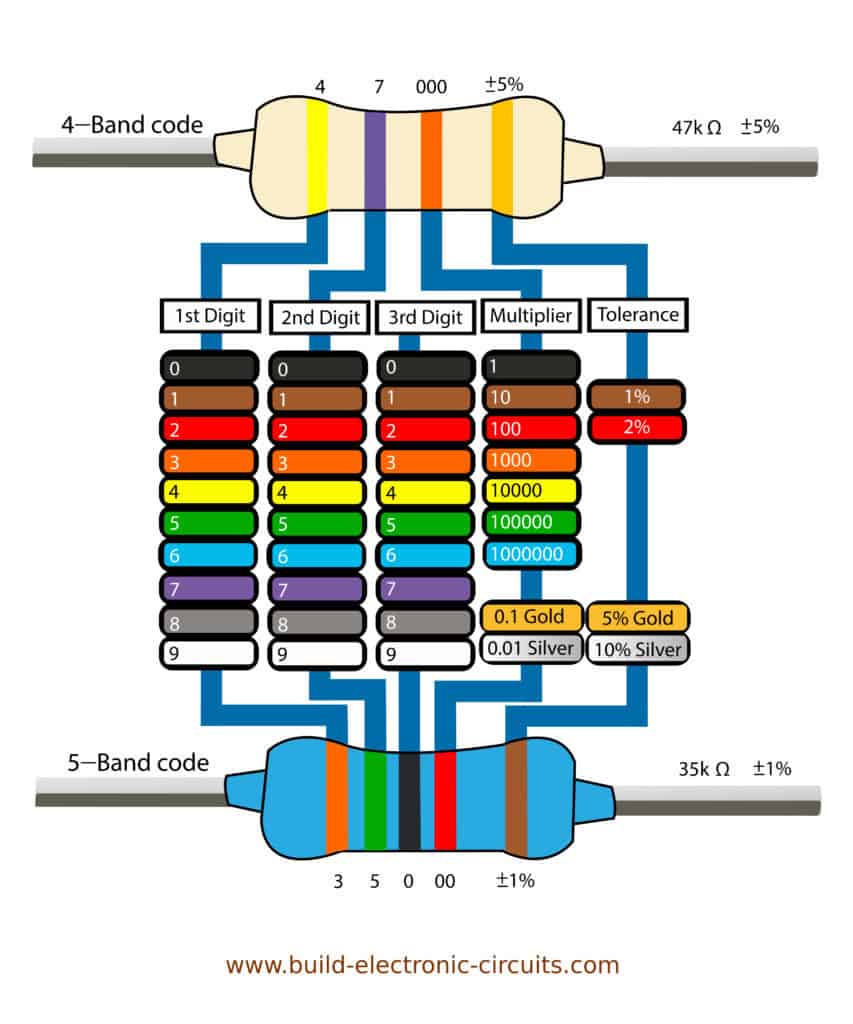Finding Resistor Values
Do you wonder what the resistor color codes on your resistor mean?
Resistors have color bands on them. Usually 4 or 5. You can easily figure out the resistance value of your resistor by looking at theses bands and comparing them with the colors in the table below.
Further down this page, you’ll find examples of how to use the color table.
Bookmark this page and print out the table below to quickly find the resistor color codes when you need them.
How To Use The Resistor Color Codes Table
In the resistor color codes table you have digits, a multiplier, and a tolerance.
The multiplier tells you what you need to multiply your digits with to get the value. The tolerance tells you how accurate this value is.
If your resistor has four color bands:
- The first two bands give you the digits
- The third band gives you the multiplier
- The fourth band gives you the tolerance
If your resistor has five bands, the first three bands give you the digits. And the following to give you the multiplier and the tolerance.
Example #1
This resistor has four bands. The resistor color codes are yellow – purple – orange – gold.
From the table above we find that this means:
- Digit 4
- Digit 7
- Multiplier 1000
- Tolerance 5%
47 multiplied with 1000 is 47000.
So this is a resistor with 47000 Ohms (47k Ohms).
Tolerance 5% means that the real value could be 5% higher or lower than 47k.
Example #2
This resistor has five bands. The resistor color codes are orange – green – black – red – brown.
From the table above we find that this means:
- Digit: 3
- Digit: 5
- Digit: 0
- Multiplier: 100
- Tolerance: 1%
350 multiplied with 100 is 35000.
So this is a resistor with 35000 Ohms (35k Ohms).
Tolerance 1% means that the real value could be 1% higher or lower than 35k.



Tidak ada komentar:
Posting Komentar